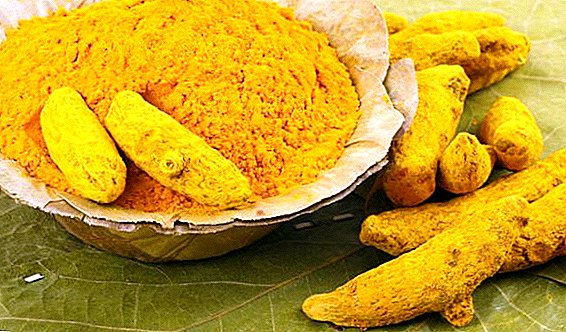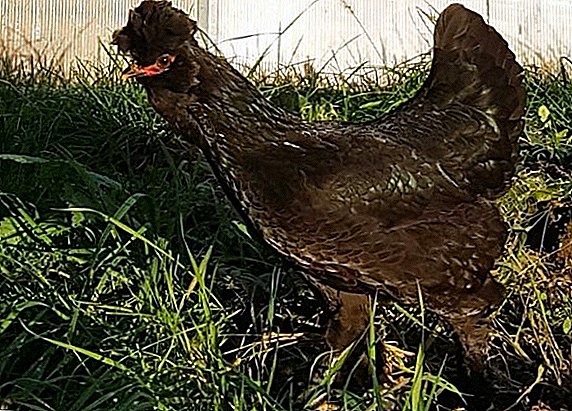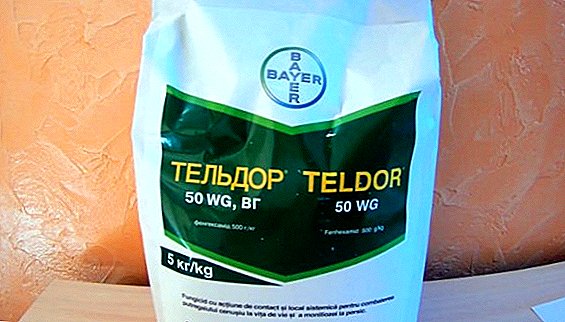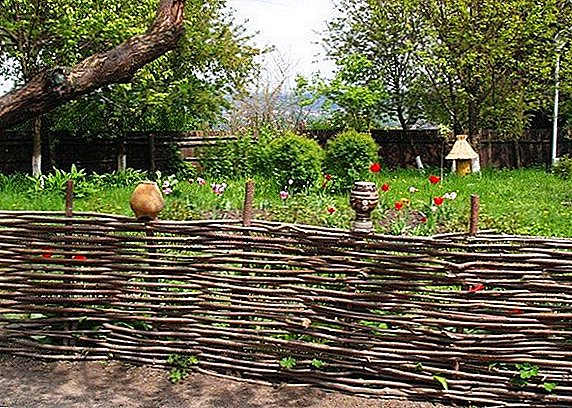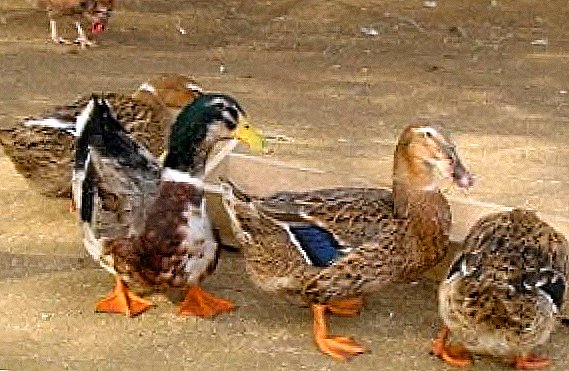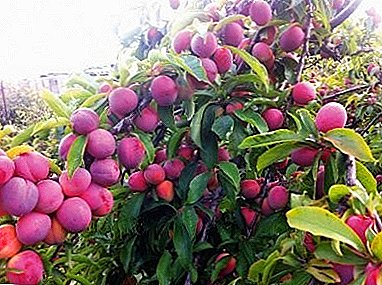
Plum By definition, it is a heat-loving ("southern") culture.
But now it can be seen quite often in the gardens of Siberia and the Far East, the climatic conditions of which, as is known, are far from the “resort” ones.
Nevertheless, many tasty and juicy varieties of these stone fruit, originated far from Russian gardens in a more favorable natural environment, got along well in the harsh edges, and the merit of this is the local breeders.
One of these "aliens" was the grade "Manchu Beauty".
Description of the plum "Manchurian beauty"
This grade can be recognized among other plum crops by the following characteristics:
- Tree. It is a dwarf plant (many consider it a bush at all).
The trunk of this plum is expressed very slightly. - Crown, branches. In this natural dwarf, when growing up, the tip is formed mainly in a rounded (usually oval) shape.
The bark on the skeletal branches is colored either brown or gray-brown.
- Bark texture - mostly scaly. Even in the nursery, seedlings have an active branching due to the high alertness of the kidneys.
- Shoots. Basically have a somewhat curved appearance.
On relatively thin shoots, painted in red-brown shades, one can distinguish a lot of light-colored lentils.
Formed on the shoots of the vegetative buds are small in size, while the fruit buds are mostly large in appearance.
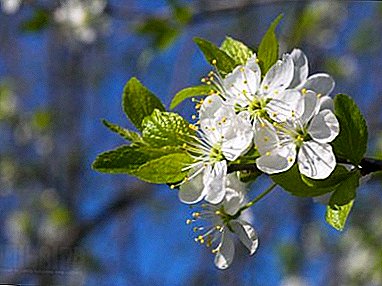 Leaves. The length of the standard sheet of this grade is about 10 cm, and width - 4 cm.
Leaves. The length of the standard sheet of this grade is about 10 cm, and width - 4 cm.Leaves form an ellipse. Color dark green, the surface of the sheet gives a light gloss.
Leaf plate somewhat concave, tip pointed. Leaves are kept on dark petioles.
- Inflorescences Formed from 3 small flowers. The color of flowers is white.
- Fruit. Usually mass of plum reaches 15 g. The base of the rounded fruit is flattened, the funnel is narrow and in-depth.
There is a weak seam. The base color of the fruit is yellow-orange, with a burgundy patina with a blue blush.
- Pulp color - yellow-green, the pulp has a rather high density and high juiciness. The mid-size bone has a silhouette of a pointed oval, it is easily separated from the pulp. Plums firmly held on the shortened stalk.
A photo
Manchurian beauty plum photo:




Breeding history and distribution region
Grade "Manchu Beauty" was created in the first half of the twentieth century by selecting plum seedlings of Chinese selection. The work was carried out by the Russian breeder Ivanov in Yaomyn (Manchuria), which gave grounds to call the new variety by its current name.
After some time, in the late 1920s, the plum was on the territory of the Far East, where it was studied and propagated by the breeders A. Taratukhin and N. Tikhonov.
At the moment, the varieties that took part in the creation of the “Beauty” are not exactly known, but according to one of the versions, the seedlings absorbed the features of three plum varieties - Chinese, Ussuri and “Simon”.
In 1947 "Manchu Beauty" It was included in the assortment in the Far Eastern, East Siberian, West Siberian and Ural regions. In addition to Siberia and the Far East, at present this variety of plum is grown in horticultural farms in European regions of Russia.
After the official "recognition" grade thanks to its valuable qualities, it was actively used in the breeding of many other plums, including such varieties as Zarya, Sister Zarya, Kolkhoznitsa, Tale, In Memory of Dutov, Katerina, Khabarovsk Early, and etc.
Characteristics of a variety
Plum "Manchurian beauty" belongs to the category of samobzoplodny fruit crops. This means that with its own pollen it cannot provide effective self-fertilization.
 Thus, for normal reproduction, it needs trees of other varieties that "help" the "Beauty" in fertilization.
Thus, for normal reproduction, it needs trees of other varieties that "help" the "Beauty" in fertilization.
The best pollinator for this plum is considered to be the Ussuriisk variety.
Tree varieties "Manchurian beauty" begins to bear fruit regularly after 3 years from the moment of planting of the same seedling. At the same time it gives the average level of crops - up to 8 kg per individual.
Early autumn culture is usually covered with ripe fruits in the period from late August to early September.
Otherwise, the tree in the shortest possible time will throw its sweet wealth to the ground.
By the way, this factor of early autumn ripening makes this culture quite popular in the harsh conditions of Siberia and the Far East.
In the category of frost resistance, “Manchurian Beauty” occupies a middle position. In any case, the plant withstands frosts below -35 ° C. However, the plum is still pretty well taken root in the Urals, as it has time to mature in the warm season.
If the gardener will comply with all agrotechnical requirements associated with the cultivation of this variety, then he will receive fruit harvest universal purpose, differing attractive sweet taste with tender sourness and excellent aroma.
The chemical composition of the fetus is as follows:
- sugar - 15%;
- titrated acids - 1.7%;
- tannins - 0.41%;
- dry matter - 24%;
- ascorbic acid - 9 mg / 100 g;
- P-active substances - 350 mg / 100 g
Planting and care
Manchurian beauty plum planting and care. Before planting should choose the right place for the tree. It should be good sunlit and removed from the nearest groundwater at least 1.5-2 m.
Also in this place should be loose fertile soil. It must be remembered that the plum does not live on acidic soils.
The plant is recommended to plant at a slight elevation.In this case, a minimum amount of snow and moisture will accumulate near the trunk, and therefore the root system will not rot.
Drop plum This variety is better in April, while the buds have not yet blossomed. Prepare in advance the planting hole depth of 50 cm and a diameter of 70 cm. Until the landing, the hole should be emptied "empty" for 2 weeks.
 With plant installation in the fossa, its roots must be straightened and covered in such a way that the root collar protrudes 4-5 cm from the ground.
With plant installation in the fossa, its roots must be straightened and covered in such a way that the root collar protrudes 4-5 cm from the ground.
Backfilling is carried out with primer extracted from the well, which is mixed with humus, ammonium nitrate, superphosphate, sand, potassium chloride, gravel.
At least 4 buckets of separated water should go to the first watering. After absorbing moisture, the near-stem circle is sprinkled with mulch from peat, humus or just dry soil.
Plum saplings should be planted in such a way that there is a distance of at least 3 m between them.
Caring for plum "Manchu beauty" in the usual way for all other plums - they form a crown in time, regularly feed them with fertilizers, cut off dead and overgrown branches. Despite its genetically defined drought tolerance, this variety needs periodic irrigation.
Diseases
Described plum demonstrates increased resistance to rubella and catastrophia. However, she may well be sick monilioz.
With moniliose (monilial burn) many plant organs are affected by the fungus Monilia. As a result, the diseased parts quickly dry out, and the fruits also begin to rot.
The disease is carried by weevils and penetrates plant tissue through skin cracks and damage.
The rapid development of the disease often contributes to high humidity.
 In order to prevent infection plums with this fungus, it is necessary to carry out prevention in the form of thinning pruning, harvesting and burning of fallen leaves and rotten fruits, in which Monilia disputes remain.
In order to prevent infection plums with this fungus, it is necessary to carry out prevention in the form of thinning pruning, harvesting and burning of fallen leaves and rotten fruits, in which Monilia disputes remain.
If the tree is still sick, it should be sprayed with 4% Bordeaux liquid before flowering, 1% Bordeaux liquid - during flowering, and again with 1% Bordeaux liquid - 16-20 days after flowering.
It should be borne in mind that spraying three times is sufficient only for dry seasons. If the year was wet, you will have to spray 5 to 6 times.
If a caring gardener is attentive to this sink, it will certainly give a person many benefits and pleasant tastes.


 Leaves. The length of the standard sheet of this grade is about 10 cm, and width - 4 cm.
Leaves. The length of the standard sheet of this grade is about 10 cm, and width - 4 cm.